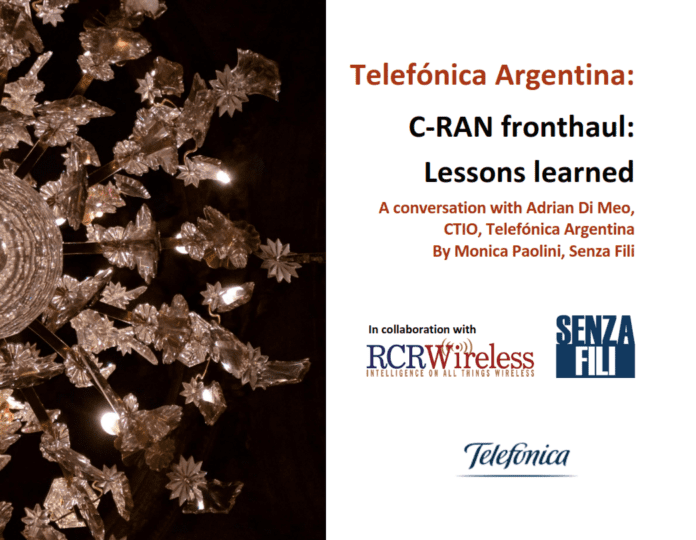A conversation about C-RAN with Adrian Di Meo, CTIO, Telefónica Argentina
The below is only a summary. Download a transcript of the complete interview and be the complete in depth report “C-RAN and 5G take transport to new capacity and latency levels. Trends in backhaul, fronthaul, xhaul and mmW”.
As mobile operators move to C‑RAN and prepare for 5G, they have to upgrade their transport infrastructure to support higher capacity and lower latencies in the RAN. Today we talk with Adrian Di Meo, CTIO at Telefónica in Argentina, about the evolution in backhaul and fronthaul as the operator aggressively moves to a C-RAN topology.
Telefónica Argentina owns fiber, so C-RAN is used at 85% of 4G cell sites and it helped to speed up the 4G deployment. Adrian said: “But where we have fiber, we’re using fiber. To make the fiber even more efficient, now we’re testing WDM solutions that can support 8 or 12 CPRI interfaces for each fiber.” Where they do not have fiber, Telefónica is testing wireless solutions, but “where we don’t have fiber, we do not use centralized RAN. We put all the RAN equipment in the tower or on the rooftop.”
Subscribe now to get the daily newsletter from RCR Wireless News
Cost is an issue for fronthaul in small cells. Adrian told us: “The challenge with the small cell is to find the proper cost for deployment, and that includes the fronthaul. One challenge we have with small cells is that the level of traffic the small cell manages is less than for a macro cell, but the fronthaul cost is the same. This makes the business case very tricky.”
This topic is discussed further in an exclusive webinar. Watch the webinar.

